The Big Four banks and Macquarie, big Liberal Party donors all, have received over $2.3 billion in taxpayer-backed funds from the Clean Energy Finance Corporation. That is almost one-third of every dollar ever invested by Australia’s green bank. Anthony Klan investigates dramatic rise in CEFC funds to the Big End of Town, particularly Macquarie, which coincides with a sudden rise in affection from Prime Minister Scott Morrison. This is Part II.
Read Part 1 – ‘The Clean Energy Finance Corporation: Lazarus with a triple bypass’ here.
It was the last gasp of an Australian decade, one which will be forever distinguished by the political furore over climate change, and fires, immense fires.
The horror of a continent ablaze was projected in headlines and on front-pages across the globe. On New Years Eve, the world was watching.
The New York Times told of “Apocalyptic Scenes”, the BBC tallied the mounting death toll and CNN’s homepage led with photos of alien, bloodied skies under the simple but haunting tagline: “Thousands of Australians are trapped on a beach as wildfires rage”.French newspaper Ouest-France went further – it would be followed by numerous others across the world in the coming days – and linked the imagery with reality:
“High on coal, rich Australia denies global warming”.
As if on cue, also on December 31, and against this acrid backdrop, a column by Energy and Emissions Minister Angus Taylor appeared in The Australian newspaper.
Supporting the piece was an uncritical write-through of those same comments in the form of a booming page-one splash: “Climate pressure ‘doomed to fail’, says Angus Taylor”.
Freshly back from courting international ridicule over his speech in Madrid, the Federal Member for Hume had doubled down.
Australia could not “single-handedly have a meaningful impact” on climate change; the “debate in Madrid was not about Australia’s performance”; we should not “feel guilty”, or listen to “shrill cries”, about our emissions reduction and “we are doing our bit and more”, Taylor told us.
The “quiet Australians”, he said, already knew this.
Reality bites
Woeful timing aside, most of the figures and statistics used by Taylor to support his lofty proclamations would withstand little scrutiny.
The column is riddled with cherry-picked data, misrepresentations and false equivalence, as highlighted by a fact-check article published by Guardian Australia later that same day, still hours before fireworks rained down over Sydney Harbour.
On closer inspection, and in the context of the Coalition’s endless fossil fuels jonesing, the piece takes a darker turn.
The (limited) success of Australia’s carbon reduction to date, and underpinning its future successes, is overwhelmingly a result of the shift to solar and wind; yet Taylor makes not one mention of those cheap and abundant renewable energy sources, which can be harvested on an industrial scale through farms that are comparatively very quick to build.
Nor does he mention pumped-hydro — a key, clean energy solution to supporting wind and solar around the clock.
“As we look forward there is enormous potential in established and emerging technologies such as hydrogen, carbon capture and storage, biofuels, lithium production and waste-to-energy,” Taylor wrote.
“Just before Christmas we delivered a national hydrogen strategy and a commitment of more than $500 million to it.”
Many of these “emerging technologies” are many years away from being cost-effective, let alone truly clean.
In the case of renewable hydrogen, a process which involves taking water and separating and rejoining the hydrogen and oxygen molecules that comprise it, it could be 20 years or more, according to experts.
In the meantime, the fossil fuel train keeps chugging along.
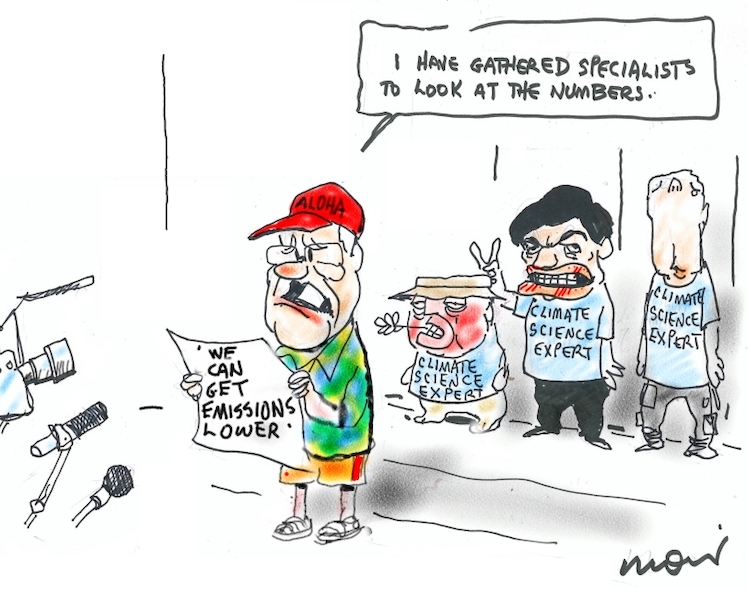
Illustration courtesy www.moir.com.au
Mandate milkshake
For Australia’s green bank, the CEFC, Angus Taylor’s New Year’s column is particularly jarring on two fronts.
Despite the Energy Minister’s professed fondness for the technology, under the 2012 CEFC Act, the green bank is expressly prohibited from investing in carbon capture and storage — that is, the process of injecting carbon emissions, such as those produced by fossil fuel plants, into natural geological formations, so as to prevent the carbon from entering the atmosphere.
Secondly, under the Act, the green bank is required to, at all times after June 30 2018, have at least 50% of its investments in renewables.
It has met this target to date (54% at June 30 2019) almost entirely due to its investments in large scale solar and wind: resources Taylor appears to have little time for.
If uncertainty is the enemy of investment, then the CEFC has had its share of English summers.
The CEFC Act cannot be changed without the approval of both houses of Parliament.
However, the Act does allow the federal government to issue the CEFC with an “investment mandate”, dictating the types of investments the green bank should make, the desired levels of risk it should take on and the rate of return it should target.
Statute tampering
Although there is no requirement for updates, or any changes at all, over the past five years the Coalition has issued the CEFC with six different investment mandates.
Under the rules of the Act the green bank is bound to follow the mandates, provided they don’t clash with the requirements of the 2012 CEFC Act.
Since being elected in 2013, the Coalition has made four attempts to change the CEFC Act, failing each time.
The first two being its attempts to abolish the CEFC Act entirely, which were killed in the Senate, and the third when it introduced another bill seeking the same outcome, which it never took to vote.
In its fourth attempt to change the Act, it introduced a bill seeking to overturn the law preventing the CEFC from investing in carbon capture and storage technology.
“In its fourth attempt to change the Act, it introduced a bill
seeking to overturn the law preventing the CEFC from
investing in carbon capture and storage technology”
That bill, too, was never voted on, and it expired early last year. (The proposed change would “provide direct support for CCS technologies, encourage greater private sector investment and reduce risk for potential investors”, Josh Frydenberg, then the Energy Minister, told parliament at the time.)
Crossroads
Australia undeniably needs more power generation, better grid reliability and new infrastructure connecting the electricity networks of the eastern states.
The debate, the one pitting the energy market operator, AEMO, and many energy experts against the fossil fuel cheer-squad members among the Coalition, is about how the nation gets there.
In March 2017, responding to high electricity prices, Morrison, then the Treasurer, instructed the Australian Competition and Consumer Commission (ACCC) to conduct an inquiry into the supply and “competitiveness” of household electricity prices.
The Clean Energy Finance Corporation: Lazarus with a triple bypass
In June 2018, the ACCC reported back.
Of the 56 recommendations it made, one was to have taxpayers wear the risk for future uncertainties around wholesale electricity prices.
For many wholesale electricity suppliers, the prospect of building new power plants wasn’t stacking up.
Many electricity retailers, the companies that send us our home electricity bills every quarter, were unwilling to lock in prices they would pay for electricity beyond a five-year horizon, fearing prices would fall considerably in the future – in large part due to the growing impact of cheap renewable energy.
As a solution, the ACCC suggested the federal government effectively “underwrite” new power plants, by agreeing to buy electricity from them at set minimum prices from say “years 6-15” of the plants’ operating lives.
Wholesalers would be more willing to build new power plants because they knew they would have a buyer in the future for the electricity they generated, regardless how far prices fell.
The proposal was not short of detractors.
Subsidising fossil fuel plants isn’t the best look deep into a global climate crisis.
Even less palatable is the idea of forcing the public to spend hundreds of millions potentially billions – of dollars buying overpriced electricity from dirty coal and gas plants for many years into the future because the fossil fuels can’t compete against increasingly cheaper renewables.
Policy think-tank the Grattan Institute, which in October published a paper titled ‘Power Play: How governments can better direct Australia’s electricity markets’, argues the ACCC proposal is a bad idea on economic and supply reliability grounds alone.
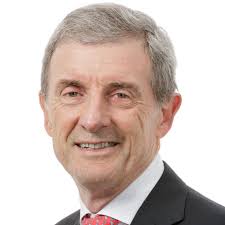
Tony Wood
Grattan Institute energy program director Tony Wood says that ironically, it’s the market uncertainty caused by constant government interventions that is scaring off investors and further pushing up prices.
“The government needs to get right out of the way,” Wood tells Michael West Media.
“None of this would be necessary if they stopped interfering and just let the market run its course.”
Canberra Bubbles
Angus Taylor’s New Years Eve comments need to be viewed through the lens of three Coalition announcements over the past 18 months.
In the second half of 2018, things weren’t looking good for the Coalition.
Way down in the polls, defeat appeared all but inevitable — electoral wipe-out a distinct possibility.
On October 23 of that year, Morrison, Treasurer Josh Frydenberg and Taylor released a co-authored statement announcing they were considering a taxpayer-funded assistance package for new power stations in response to the ACCC recommendation (one of the 56 it had made).
The initiative would be called the Underwriting New Generation Investments (UNGI) program, it would support the construction of new “firm” power stations and it would be “technologically neutral” — meaning the proposals could be for any type of power plants, including coal.
In mid-December the government called for proposals and suppliers scrambled to submit applications ahead of an an extremely tight deadline of January 23, 2019, just weeks later.
The move was widely seen as “thought bubble”, rushed from Taylor’s office ahead of an expected electoral drubbing.
“For the Coalition it didn’t matter, they weren’t going to win the election so they were never going to have to implement it anyway,” says Tim Buckley of think-tank the Institute for Energy Economics and Financial Analysis.
Weeks later, in February 2019, the Coalition announced it had received 66 proposals under the UNGI program, including ten for coal-fired power stations.
The following month it announced 12 “shortlisted” projects that would be first in line, and said the government would “continue to engage” with the remainders.
The short-list included five gas plants, six pumped-hydro projects and one coal power-plant upgrade — the 1320MW Vales Point generator on the NSW Central Coast.
Mandate number 5
On December 14 2018, the day after calling for candidates under the UNGI program, Canberra made a second announcement: the CEFC had a new mandate. It was its fifth mandate since 2015.
In a joint media release, Mathias Cormann and Angus Taylor – who had recently and repeatedly declared there was “too much wind and solar in the grid” – said they had instructed the CEFC to focus on “more reliable, 24/7 power”.
The wording of that 2018 mandate is a little less direct, but states the green bank is to “include in its investment activities a focus on technologies and financial products as part of the development of a market for firming intermittent sources of renewable energy generation” as well as “supporting emerging and innovative clean energy technologies”.
Three months ago, on October 30, a third related statement came from Canberra.
This one, co-authored by Angus Taylor, Scott Morrison and Josh Frydenberg, said $1 billion would be given to the CEFC to establish a “Grid Reliability Fund”.
The statement said the new fund would: “support government investment in new energy generation, storage and transmission infrastructure including eligible projects shortlisted under the Underwriting New Generation Investments (UNGI) program”.
However, as with the earlier two announcements, specifics were scant.
Tumbleweeds
Despite its pre-election urgency, little appears to have moved with the UNGI program since the Coalition’s unexpected May election win, drawing mounting frustration from industry.
Last month, two days before Christmas, the government released a statement saying the “first two projects” had progressed under the scheme: the Gatton and Dandenong gas-fired power stations. (Bear in mind that although gas has hardly the dirty reputation of coal, it is by no means clean energy either.)
Though, again, specifics were in very short supply: there had been an “agreement of key initial support terms” and the government would “now enter detailed underwriting and contractual negotiations” with the proponents, it said.
The UNGI program launched in October 2018, the new CEFC “firming intermittent sources” mandate issued two months later, and the Grid Reliability Fund announcement of two-and-a-half months ago are of course all linked.
A sneaky plot revealed
It’s clear the mooted $1 billion fund has been created in an attempt to shoehorn the “technology agnostic” UNGI project into the legislature-bound CEFC green energy vehicle.
Whether the Coalition now sees the green bank as simply a cheap way or a free way of delivering essential infrastructure upgrades, as some have suggested, or as a way to appease party hardliners bent on new fossil fuel plants – or both –remains to be seen.
Though the October statement suggests fireworks may extend long into the new year.
“Finance Minister Mathias Cormann said the Government would update the CEFC enabling legislation to ensure the Grid Reliability Fund could support suitable projects,” the October 30 statement said.
The Coalition was saying they would have a fifth crack at changing the CEFC Act.
Corporate welfare for the Big End
When most people hear the phrase “$10 billion green bank”, names such as Lend Lease, Macquarie Bank, Visy, Westpac, and ANZ don’t immediately spring to mind.
Yet these blue-chip Australian giants, and several others, are among the biggest recipients of taxpayer backed CEFC investment funds.
This flow of money to the big end of town has ballooned in recent years, in large part due to Coalition directives.
In mid-June 2016, two weeks out from the federal election, the Turnbull government announced that, if re-elected, it would create two new investment funds, each to be administered by the CEFC.
A so-called Reef Funding Program would invest up to $1bn over ten years financing “clean energy projects in the Great Barrier Reef Catchment Area” to support its Reef 2050 Plan, a “sustainability” program announced in 2015.
Secondly, a Sustainable Cities Investment Program (a riff on Malcolm Turnbull’s “Smart Cities” program, itself widely derided as long on marketing, short on substance) was also to be established: a further $1bn was to be invested over ten years in a “broad range of clean energy projects” in Australia’s cities “from Alice Springs with 25,000 people, to Sydney”.
The Coalition was re-elected, with a one-seat majority, and six months later, on December 13, it issued the CEFC with a new mandate to implement the programs.
Many viewed Turnbull’s announcements as an abuse of the CEFC as an election slush fund — cynicism underscored by Abbott’s attempts a year earlier to ban the it from investing in wind farms and small-scale solar projects.
In reality, Turnbull’s changes were largely superficial: the new “funds” would largely exist in name only, essentially as sub-headings in CEFC’s annual reports; the money would be drawn from the CEFC’s existing $10bn allocation; and all investments under the new programs would be made within existing guidelines.
Yet the Sustainable Cities directive has had arguably the biggest impact on the CEFC of any mandate, aside from having its returns target multiplied under Abbott.
A board gone, then Liberally stacked
In part, this was because it came against a backdrop of the complete overhaul of CEFC’s leadership.
The ALP appointments were out, the Coalition’s in.
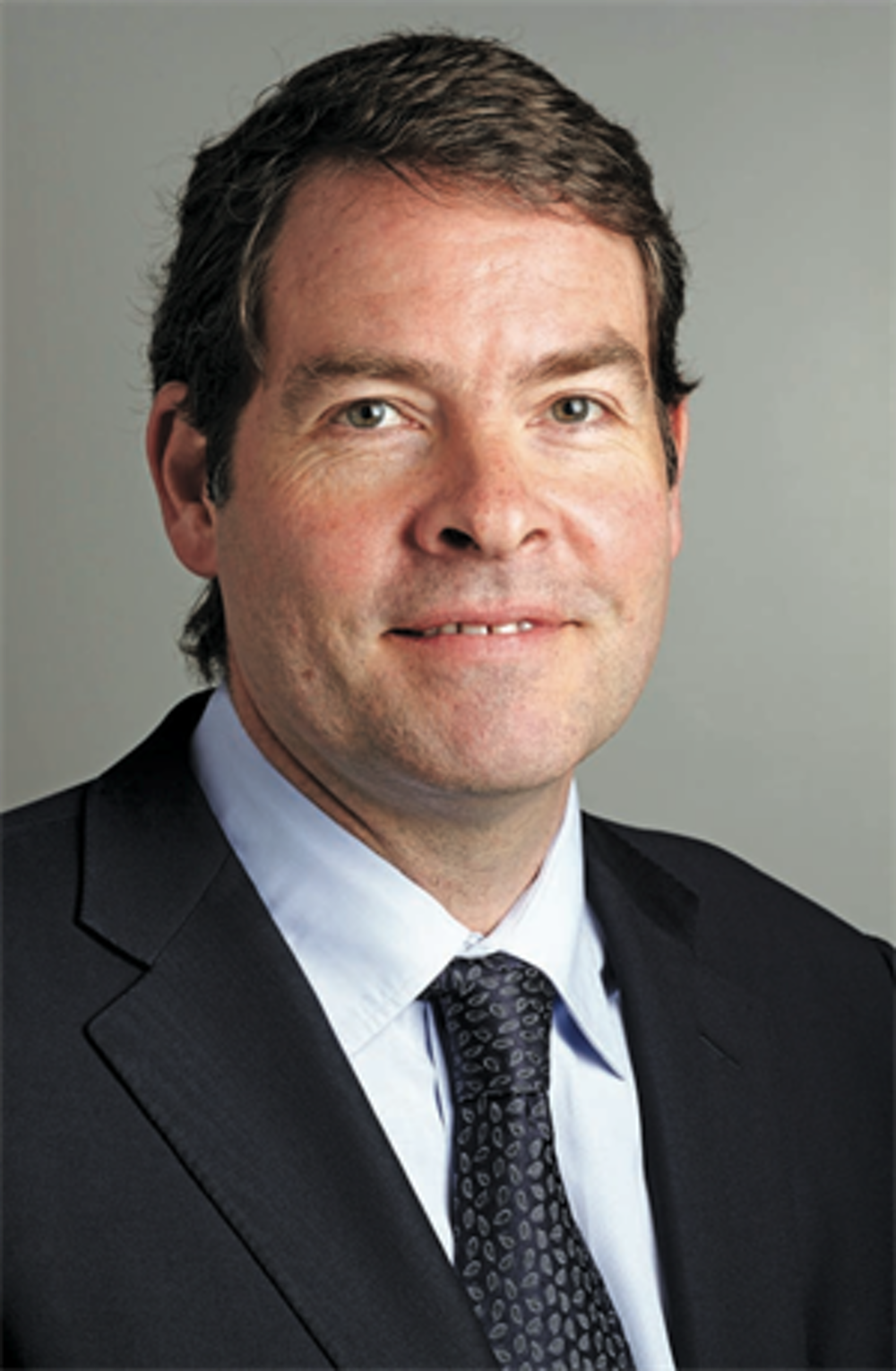
Oliver Yates
CEFC’s founding chief executive Oliver Yates, appointed in 2012 by Gillard government, stood down in May 2017, having announced his intentions six months earlier.
In the coming months, Yates would be followed out the door by the CEFC’s entire board, whose five-year terms had not been extended under the Coalition.
At law and on paper Turnbull’s new mandate may have been largely academic, but the new CEFC management and board seized it with both hands.
Within just 18 months, Sustainable Cities investments of $1.8bn had been made or committed to – almost double the investment stipulated over an entire decade – as vast sums of taxpayer-backed funds flowed to many of the biggest names in Australian business.
In the year to June 30 2018, the CEFC made a record $2.3bn in new commitments across 39 projects, its accounts show.
CEFC plunges into commercial real estate
The CEFC invested $100m in the $4bn Investa Commercial Property Fund, which it said was to help fund a $900m skyscraper in Sydney CBD’s Martin Place; $100m was injected into the AMP Capital Wholesale Office Fund; and $100m went the Australian Prime Property Fund Commercial, a wholesale unlisted property trust run by infrastructure giant Lend Lease.
CBA received $181m, ANZ $150m and NAB $180m in cheap funds so as to run “energy efficient” loan programs for customers, while the CEFC invested in CBA and Investa “green bonds”, to the tune of $100m and $19m respectively.
The first investment to be signed off with Learmonth in charge was a $32.8m taxpayer supported loan to Goldman Sachs and a group called Blue Sky Private Real Estate to fund the development of a student accommodation facility in Adelaide “built to a new benchmark in energy efficiency design”.
And then there’s Macquarie.
The Vampire Kangaroo
In recent years, Macquarie’s name has regularly popped-up in connection to CEFC, as a potential buyer should the federal government seek to privatise the green bank.
Macquarie bought the UK’s Green Investment Bank, the CEFC’s British equivalent, for £2.3bn ($A4.3bn) in 2017, after the UK government had put it on the market two years earlier.
The proposed Macquarie sale raised major concerns in Britain at the time, with many concerned the financial giant would strip the green bank – it was also created in 2012 – of its valuable components and destroy its green purpose.
A British newspaper dubbed the finance giant the “Vampire Kangaroo”, in a nod to gonzo journalist Matt Taibbi’s famous, post-global financial crisis, 2009 Rolling Stone magazine description of Goldman Sachs as a “great vampire squid wrapped around the face of humanity, relentlessly jamming its blood funnel into anything that smells like money”.
Two-and-a-half years after the sale was completed, the controversy continues to rage.
Love this @thesundaytimes depiction o ‘Vampire roo’ @Macquarie -sucking lifeblood frm UK,1 asset at a time. Nxt up: @GreenInvBank #saveGIB pic.twitter.com/GsI2n92tEa
— Sepi Golzari-Munro (@SepiGM) December 29, 2016
Earlier this month Sir Vince Cable, who set up the green bank in 2012 as then business secretary in the UK coalition government – and has been a long-time critic of the sale – said the sale had been “totally unnecessary and damaging”.
This was because before the sale the green bank “built up a considerable reputation for finding good projects in the UK that could be funded through the market”, according to a Financial Times article.
“It has now simply becoming a small part of Macquarie’s global business, which is not what the original intention was for the bank,” the former business secretary was quoted as saying.
(In response, Macquarie rejected the claim and said it was “firmly committed to the UK”.)
But the Macquarie connection to our green bank runs far deeper.
DNA factory
The CEFC has Macquarie Bank in its DNA, just as Macquarie has government subsidies in its DNA.
Its founding chief executive Oliver Yates was a former executive director of the investment bank – nicknamed the Millionaire’s Factory – spending 23 years there until 2011, working in Australia, the US and Europe.
Two of the CEFC’s founding board members were also alumni:
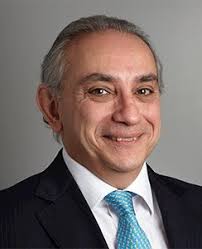
Michael Carapiet

Anna Skarbek
Michael Carapiet had been a life-long Macquarie Banker, including as executive chairman of Macquarie Capital and Macquarie Securities; and Anna Skarbek, a lawyer, had worked as an investment banker in Macquarie’s energy and utilities team.
The ALP Gillard government clearly had an eye to the Coalition’s sledging that the CEFC would be a push over, lending money to projects that “no banks would touch in a fit”.
It’s unsurprising CEFC would include some ex-Macquarie Bankers in its executive ranks, given Macquarie is a major player in green financing in Australia and globally.
Indeed, it has brought a number of benefits to the green bank, one expert in the sector tells us.
For one, the Macquarie mongrel which Yates brought with him would be successfully harnessed to fight back against the seemingly endless encroachments from the Coalition government, which kicked off shortly after Tony Abbott’s victory speech in September 2013.
The contributions of Yates (and founding chair Jillian Broadbent) to the CEFC were largely commended by industry experts interviewed for this story.
(Yates declined to be interviewed.)
However in recent years, particularly since Yates left in mid-2017, the connections between the green bank and the Millionaire’s Factory would take on a different complexion.
A Macquarie Monsoon
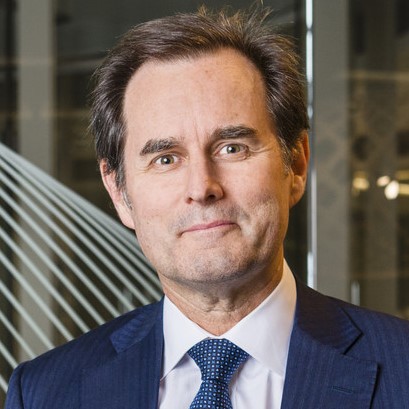
Ian Learmonth
CEFC’s 2017 management overhaul would unleash a Macquarie monsoon, starting with new chief executive Ian Learmonth who, like Yates, had formerly been a Macquarie Group executive director.
Learmonth took the reigns from Yates in May 2017 and the bulk of the CEFC’s founding board members, including chair Broadbent, left on August 7.
In the five years before the management overhaul, the CEFC had never reported a single Macquarie-linked transaction.
Yet on September 5, just four weeks after the founding chair and most of board left the building, the CEFC announced it had provided $100 million in cheap finance to Macquarie Leasing.
Macquarie would use the money to offer discounted loans to customers buying energy efficient products, including an interest rate discount of 0.7 per cent on loans used to purchase electric vehicles, it was announced.
The two remaining long-time directors left on CEFC’s board, Paul Binstead and Martijn Wilder, left the CEFC several months later, on February 1 2018, when their five-year terms expired.
Then, three weeks after their departure, Learmonth announced another $100m Macquarie deal: this time as equity in the agricultural property arm of $180bn-plus global monster fund, Macquarie Infrastructure and Real Assets.
“The CEFC is just a plaything for Macquarie Bankers,” one critic of the green bank’s current direction told Michael West Media.
“They’re using cheap funds to underwrite Macquarie’s balance sheet, with taxpayers wearing the risk.
“Macquarie, Visy, Cleanaway, all these big guys can go out tomorrow and raise all the capital they want, but instead they’re tapping (the CEFC) which was never what it was supposed to be about.”
Those concerns are not without merit.
Dangerous methane levels
Three months ago, on October 15, Learmonth’s CEFC’s announced yet another mega Macquarie investment: a further $100m to the Macquarie Infrastructure and Real Assets fund, this time ostensibly in the fund’s “Australia infrastructure platform”.
Despite a media release making lofty and highly generalised claims, such as how the equity investment would “support emissions reduction”, involve “identifying global best practice” to “drive positive change”, “support decarbonisation strategies across the platform” and “assist our assets to identify and achieve meaningful emissions reduction on a day-to-day basis”, it doesn’t provide a single detail as to what, specifically, will be done with the money.
On close inspection, the 800-word statement doesn’t even provide a single obligation that Macquarie has to meet in return for the new $100m investment of taxpayer-backed funds, money on which Macquarie will now likely earn healthy management fees.
Some critics have raised concerns question about CEFC funds being invested in the Macquarie Infrastructure and Real Assets mega-fund at all, given that same fund also owned a “portfolio” of coal-fired power stations, in both India and Russia.
Learmonth and CEFC chair Steven Skala declined to be interviewed for this story.
When asked how many former Macquarie Group staff currently worked at the CEFC, or how many deals the CEFC had entered into which involved Macquarie or its related entities, CEFC spokeswoman Rebecca Rose declined to comment
“We apply commercial rigour to individual investment decisions, which are made independently of government,” Rose said in a written statement.
“Our Executive Investment Committee reviews investment opportunities and makes recommendations to the Board, which approves suitable investments.”
Rose said the CEFC “does not use either finders’ or origination fees”.
Revolving doors
As well as Learmonth, CEFC chief investment officer, Ludovic Theau, and asset management officer Sara Leong are both Macquarie alumni, while current CEFC directors Philip Coffey and Nicola Wakefield Evans are also both currently board members of Macquarie Group.
It’s not a one-way street either.
Two months after Yates stood down as CEFC, he resurfaced as a Macquarie executive director, working to set up green banks in Asia, a role held until early last year; while former chair Broadbent, who is also a former chair of the Reserve Bank of Australia, was appointed to Macquarie’s board in November 2018.
There are also numerous connections between former senior Macquarie Bankers and funds the CEFC has invested in.
In December 2018, the CEFC announced a $100m investment in the Australian Renewables Income Fund, which owns several onshore wind farms and is run by Infrastructure Capital Group.
Infrastructure Capital Group managing director Tom Laidlaw spent 14 years with Macquarie before joining ICG in 2012, and executive director Craig Whalan is a former Macquarie associate director.
In October 2018, the CEFC announced the CEFC was committing up to $90m to fund a large-scale, $700m “energy-to-waste” facility at Kwinana, about 20km south of Perth.
The project is being undertaken by Macquarie Group and Dutch Infrastructure Fund, who together have put in equity of $275m.
Just as the flow of money to the big end of town would rocket under the new CEFC regime, so to would the length of green bank’s annual list of “related party” disclosures.
For the year to June 30 2018, the CEFC directors who are also directors at Macquarie, Coffey and Wakefield Evans, got a shout out not only because of the CEFC’s Macquarie investments: they were also directors at Lend Lease, into whose unlisted commercial property fund the CEFC had injected $109m.
Wakefield Evans’ husband also got a mention because on November 29 2018 he had been appointed a director of Blue Sky Alternatives Access Fund — the same group building students accomodation in Adelaide with a $32.8m CEFC loan.
CEFC director Andrea Slattery was mentioned because she was separately a director of AMP, into whose Capital Wholesale Office Fund the CEFC had invested $121m.
Slattery’s son also got a shout-out – he was “in-house counsel” at Cleanaway Waste Management, to which the CEFC had loaned $90m.
For the 2016-17 financial year, immediately before the management shake-up, there are no director related-party disclosures and in the preceding four years only one person is named. Then CEFC director Martijn Wilder who was a related party to law firm Backer & McKenzie from which the CEFC had obtained some legal advice and seconded a staffer.
In just over two years, about $345m of CEFC funds have now flowed to Macquarie.
Analysis of CEFC’s annual reports and other disclosures shows Westpac has received $290m, ANZ $250m, NAB $510m, with the CEFC committing a massive $696m to the CBA.
In all, the five major banks have been allocated $2.31bn of taxpayer-backed CEFC cash.
Despite the surge in cash to major corporations, by June 30 2019 the CEFC had commitments of only about $6.2bn, after removing $718m of loans already repaid and small number of commitments that didn’t eventuate. That meant that by New Years Eve, based on the deals the CEFC has announced since June 30, just under one-third – 31% – of CEFC commitments had been to Macquarie and the big four banks.
———-
Up Next – Final Report in our CEFC investigation: we reveal the ASX darling and CEFC beneficiary fudging key fuel efficiency calculations, conspicuous absences in the latest CEFC mandate and how the clock is ticking on a policy and publicity time bomb which the Coalition has spent years wiring and installing for itself.
Anthony Klan is an investigative journalist and editor of independent news outlet The Klaxon. He specialises in exposing corporate malfeasance and government corruption and has won multiple awards, including the Walkley Award for Business Journalism.

